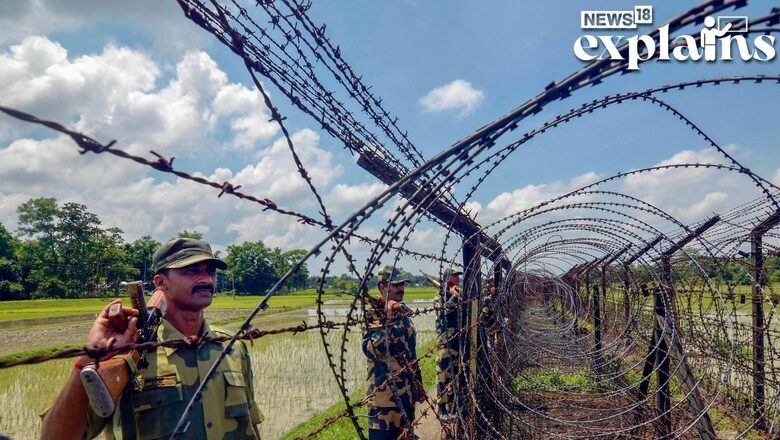
views
The Ministry of Home Affairs (MHA) has announced plans to install an advanced smart fence system along a 100-kilometer section of the India-Myanmar border to strengthen the existing surveillance system.
The announcement comes at a time when unfenced border and unregulated migration from Myanmar have been blamed as factors responsible for the ethnic violence in Manipur, which has claimed more than 180 lives in the state since May violence.
The plan for fencing was announced in the 2022-23 annual report of the MHA published last week, in which the government said that there were 201 insurgency-related incidents registered in all the northeast States and 137 such incidents in Manipur.
Govt’s Plan for Indo-Myanmar Border?
India shares a 1,643 km long border with Myanmar which passes through states including Arunachal Pradesh (520 km), Nagaland (215 km), Manipur (398 km) and Mizoram (510 km), according to the MHA report.
Out of the 1,643 km border with Myanmar, demarcation of 1,472 km has been completed. It also said that the construction of fencing for a border length of 10 km at Moreh, Manipur has been awarded to BRO and is under progress. The fencing in 6.8 km has already been completed, while the total construction is scheduled to be completed later this year.
Union Home Minister Amit Shah in August said that an influx of Kuki migrants from Myanmar had “created insecurities among Meiteis.” According to Shah, the situation in Myanmar especially after the military coup got particularly challenging.
A Free Movement Regime (FMR) exists between India and Myanmar. Under FMR, every member of the hill tribes, who is either a citizen of India or Myanmar and resident of any area within 16 km on either side of the Indo-Myanmar border can cross the border on the production of a border pass, which is issued by the competent authority and can stay up to two weeks per visit.
What are Smart Fences?
Smart fence is a part of the government’s comprehensive integrated border management system (CIBMS) and works both as a surveillance tool and a warning system through sophisticated devices, including cameras, sensors, lasers and radar systems. The state-of-the-art sensors and CCTV cameras can pick up even the slightest movement and send alerts to the control centre.
The smart-technology-aided fence involves a number of devices including sensors, networks, intelligence, data storage and command and control solutions to improve situational awareness. It also includes a laser-based intruder alarm system is deployed along with surveillance tech to plug vulnerable gaps along borders.
During smart fencing sensors like thermal images, underground sensors, fibre optical sensors, radar and sonar are mounted on towers, poles and aerostats for round-the-clock surveillance and under extreme weather conditions.
The ground surveillance radar of the smart fencing can scan 180 degrees of the border and detect vehicles at a range of 15 km and humans at a range of 5 km.
Earlier, over 2,000 kilometres length of the India-Pakistan and India-Bangladesh border had been identified as being vulnerable or as being without fences which led to illegal migration and cattle smuggling.
However, the Comprehensive Integrated Border Management System project will improve the capability of BSF in detecting and checking cross-border crimes like illegal infiltration, smuggling of contraband, human trafficking and terrorism.
How it Helps in Border Security?
The project is a part of the Narendra Modi government’s plan to completely seal India’s border with Pakistan, Bangladesh and Myanmar.
The security forces can maintain the surveillance system through a monitor sitting inside their control rooms. The alarms go off as soon as there is any infiltration attempt.
As of now, less than 10% of Manipur’s 400-km international border with Myanmar is fenced which leaves the region open for cross-border illegal activities. Due to the difficult topography of the region among other reasons, fencing the entire border is challenging.
India’s first ‘smart fence’ pilot project was launched by then Home Minister Rajnath Singh along the India-Pakistan border in 2018.
The home ministry’s Rs 22 crore pilot project under CIBMS included two 6 km stretches of the border in Jammu in September 2018. It was also launched on the India-Bangladesh border in 2019.















Comments
0 comment